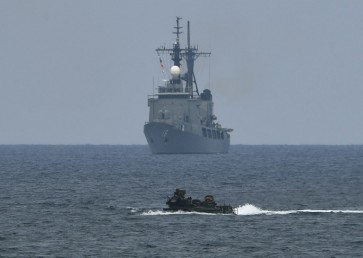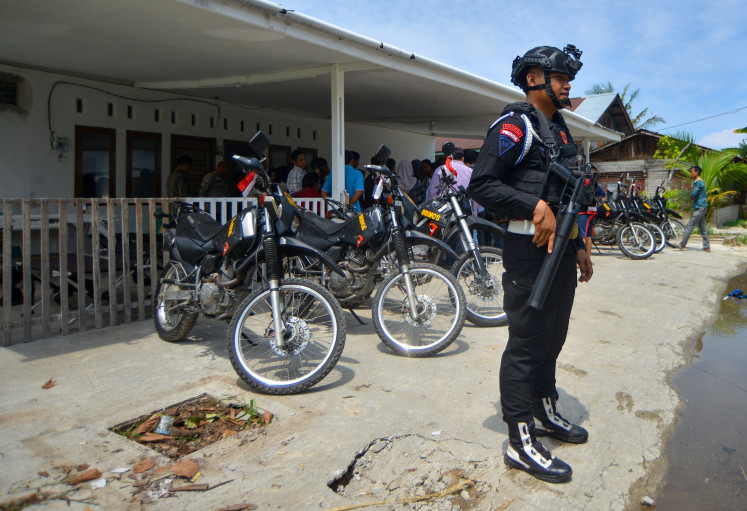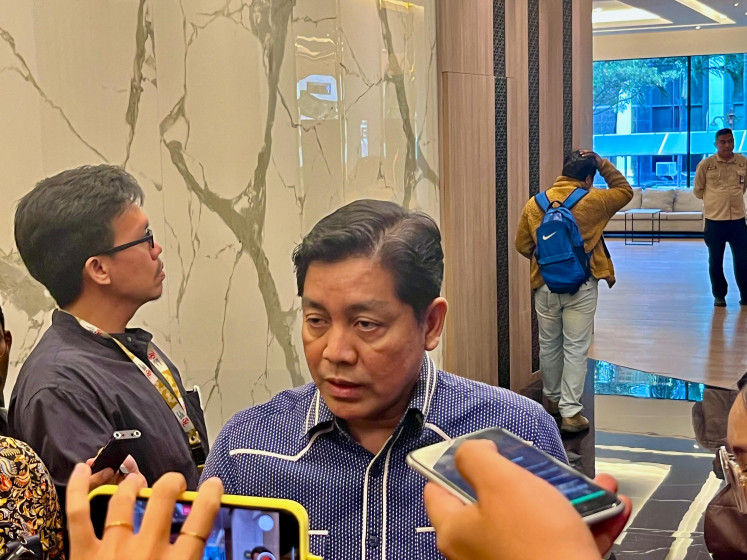Popular Reads
Top Results
Can't find what you're looking for?
View all search resultsPopular Reads
Top Results
Can't find what you're looking for?
View all search resultsProjects and decision-making in ASEAN
No doubt, ASEAN is among the most dynamic economic entities in the world today
Change text size
Gift Premium Articles
to Anyone
N
o doubt, ASEAN is among the most dynamic economic entities in the world today. Regional seminars, reports and summits dared to confirm that ASEAN will be among the future economic giants in Asia Pacific, together with India and China.
Looking at the pattern of attention and the size of projects coming to ASEAN, such a depiction of reality and hope is appropriate. In 2010, inflows of investment into ASEAN from around the world reached a record US$75.8 billion (almost double the number for Brazil, though only less than half of that in China), of which 16 percent comprised intra-ASEAN investment.
More will come, definitely. The Organization for Economic Cooperation and Development’s Southeast Asian Economic Outlook projects that compared with ASEAN, the sluggish economic growth elsewhere reveals that ASEAN will definitely secure a solid economic-growth performance through to 2016.
Indeed, there are cooperation frameworks secured to tap this positive growth in ASEAN. The European Union (EU) has its CEPA (Comprehensive Economic Partnership Agreement), complete with its assessment working groups that comprise prominent intellectuals and business and government officials. China has developed a private equity fund called CAF (the China-ASEAN Investment Fund), which focuses on identifying and handling investment opportunities in infrastructure, energy and natural resources in the ASEAN region and China.
This fund is backed by the Export-Import Bank of China and last year promised to invest $500 million in ASEAN. In 2010, CAF invested $400 million in four companies in the Philippines, Thailand, Cambodia and Laos. The United States is also in the picture. Last year, the US Secretary of State declared that the US does not just want to improve the size of its investment in the region, which last year alone doubled from the year before, but also wants to shore up the infrastructure of ASEAN member countries.
Implied in the cooperation is a desire to engage ASEAN in an exclusive way. If possible, each wants to be “the one” with the best progress in its cooperation achievement. For that, they are willing to invest not just money but also time and attention by high-ranking government officials in capacity building, stakeholder meetings, working groups and even research.
In return, ASEAN has to do the homework to live up to the promises made to its economic partners. This is where partners start to feel nervous. These cooperation frameworks are expected to predict unforeseen political hurdles in member countries and encourage trust when doubts emerge among ASEAN member countries. The findings are still challenging.
The EU’s CEPA, for instance, is not progressing as fast as expected despite the commitment from the EU to pour money into capacity building and to reduce their portion of product tariffs faster than ASEAN members. The environmentally sustainable standards for palm oil is still seen as a hurdle to producers in Indonesia, and not all producers can be reached in the cooperation’s capacity building efforts given their small-scale business operations.
Indeed, the issue of micro-business operations in many ASEAN countries demands extra work (and headaches) to meet the target of increasing trade volume, meeting consumer-driven standards of quality and safety, applying environmentally sustainable standards, and improving value-added products.
In addition, certain areas of business, such as food, agriculture and plantations are considered sensitive products for integration among ASEAN member states. These sectors employ many workers and, to some extent, are also used by ASEAN governments to create jobs, regardless of how decent these jobs are in terms of income and social security levels and core labor standards.
With China, some ASEAN members are becoming jittery at the thought of opening their economies. The key is timing and fairness. China, with its capacity to mass-produce low-cost products is still seen as a threat to local products and the livelihoods of small-scale producers.
The language barrier with Chinese investors and traders is also an issue. The Chinese people often apologize for their lack of fluency in English, while their message is actually very clear and sharp. Consequently, trust in their motives and ignorance about the way in which the Chinese run their businesses are still problematic for many.
With the US, the challenges are to create an ASEAN single window for customs clearance, standards for technical assistance and cross-border supply-chain integration. These were identified last year in the ASEAN Trade Facilitation Forum.
For sure, the issue here is not just economic, it is also political. ASEAN is advancing greater public participation in various economic cooperation projects introduced by its member governments. Media coverage of ASEAN meetings is quite intensive and regular and so is the analysis about ASEAN within the mass media. Consequently, decision-making in ASEAN can’t ignore the voices of concerned citizens. This is why Indonesia vowed to make ASEAN people centered, not elite driven.
A people-centered ASEAN implies assuming responsibility for all its citizens so that what ASEAN implements must be fruitful and beneficial for everyone within ASEAN’s borders. This is no easy task for ASEAN governments. ASEAN decision-making is based on consensus, mostly among ministers and heads of state. In reality, these officials may not be popular domestically or they may have trouble communicating the decisions agreed in ASEAN summits to subordinates and colleagues from different ministries.
Nowadays, the ASEAN Foreign Ministers grouping is only one of four ministerial bodies in the ASEAN Political and Security Community Council; there are also the ASEAN Economic Community Council and ASEAN Sociocultural Community Council.
In other words, an assumption that agreements among certain ministers, let alone among heads of state, will run smoothly within the time frame of cooperation is misplaced. Although all member countries place diplomats to negotiate the details in the ASEAN Secretariat, they are not council members. They may be extensions of ASEAN governments and the absorbers of information from other diplomats, but they do not have the authority to make decisions for the country.
Such conditions imply that a time bonus is needed to advance the implementation of regional standards, practices or cooperation frameworks. It may be sensible for partners to break down agreements for different assemblies of ASEAN members, but the consequence of this would be a compromised centrality of ASEAN.
The writer is director of the Paramadina University Graduate School of Diplomacy, Jakarta.










